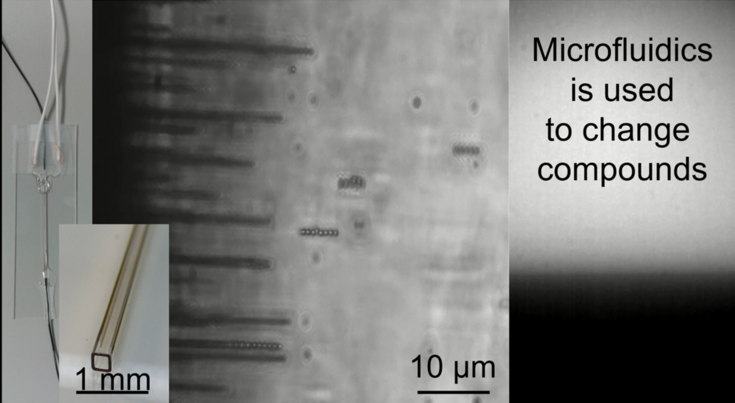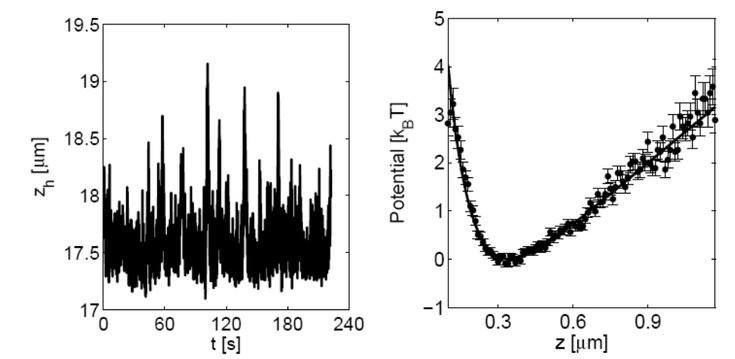Self-organizing functional materials of biomimetic folding colloidal patchy polymers
Background
Working on this: Peter van Oostrum*, Tayebe Saghaei*, Ronald Zirbs*, Ivan Coluzza^ and Erik Reimhult*
This project is supported by FWF project P 27544-N28
*Laboratory for Biologically Inspired Materials
The sequence of the amino acids in proteins dictates their folded 3-D structure. Our goal is to realize similar directed self-folding on a larger – colloidal – scale to study the folding in real space. According to our simulations, the prerequisites for designed folding are: a sequence of different isotropic interactions between the colloids and an attractive (patchy) interaction. Holographic microscopy is used to measure the interactions to improve the numerical folding predictions, while confocal microscopy is used to visualize string dynamics. Using this kind of versatile self-organization, new functional materials can potentially be realized.
Proteins in nature consist of chains formed from a selection of ~20 different amino acids. The interactions between them have different isotropic terms and some directional hydrogen bonds. The sequence of amino acids in the protein guides the folding to the minimum free energy 3D structure. Known protein structures were obtained in simulations by modeling the peptides as spheres with both an isotropic interaction and a directional one. Various bio-inspired shapes of the isotropic interactions and even different numbers of directional interactions "patches" were tried and led to similar directed self-assembly. This robustness inspires the experimental realization of folding patchy colloid strings to study this kind of self-organization in real space. This type of self-organization could revolutionize materials science. For more information on the modelling and theory of this project please contact Ivan Coluzza.

PMMA beads forming strings in water under influence of an external electric field (~0.1 V/µm @ 1 MHz)
Measuring interactions
By numerically minimizing the difference between calculations and experimental holograms, we can track particles with nm accuracy in 3D at hundreds of frames per second. Statistical analysis of particle traces will be used to measure the particle interactions to improve the modelling of the folding behaviour of strings of these particles. For more information on this please contact Peter van Oostrum.
Lee et al. Optics Express.15, (2007), PhD-thesis at www.colloid.nl.

The interaction potential between a charged glass plate and a charged silica plate in ethanol can be determined from the probability distribution of fitted particle depths using the famous Boltzmann distribution.
